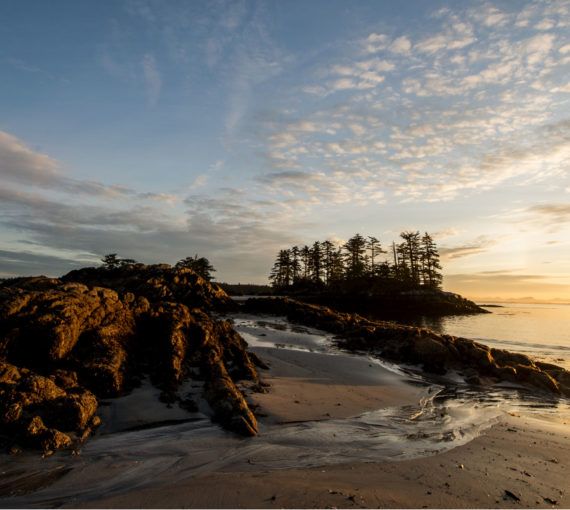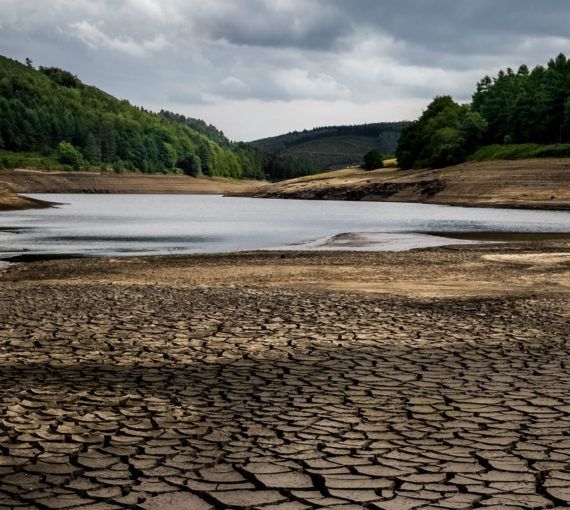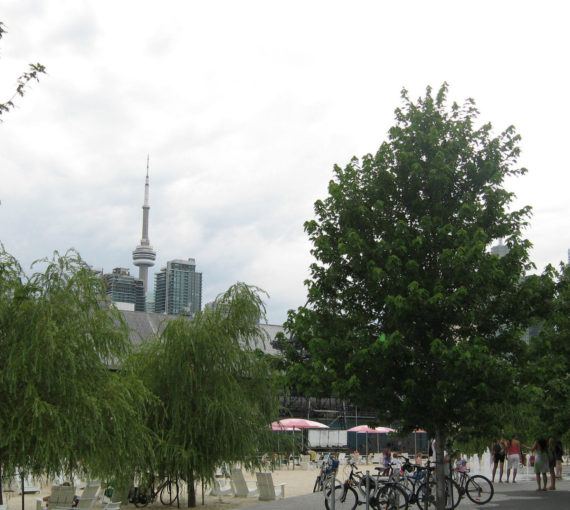What are nature-based solutions?
Humans are entirely dependent on nature — for our survival and well-being. The services nature provides are crucial for the functioning of our societies. We can’t afford to lose them.
Nature-based solutions:
- Protect, sustainably manage, and/or restore natural or modified ecosystems
- Address societal challenges effectively and adaptively
- Provide human well-being and biodiversity benefits
Inspired and supported by nature, nature-based solutions help address a variety of environmental, social and economic challenges in sustainable ways. This synergetic approach decreases the risk of exacerbating one crisis while dealing with another.
As we grapple with the climate emergency, mass species extinction and a global pandemic, nature-based solutions can help redress imbalances that lead to climate change and biodiversity loss. The key is to work with ecosystems to address a range of major societal challenges.
Ultimately, we must work with nature to prevent and adapt to problems such as flooding, water scarcity, wildfires and climate disruption. When we work against nature, we work against ourselves.
David Suzuki
Nature’s services provide the essentials of life
We depend on healthy ecosystems for air, water, food and safety, so life would not be possible without nature’s services. Though people have long appreciated the many and varied benefits nature provides, the concept of “ecosystem services” has been developed to describe them.
Learning to understand, measure and manage these services can help us make better decisions about how we interact with nature and provide new justifications for protecting and restoring natural spaces.
What services do ecosystems provide?
Provisioning services
Ecosystems supply tangible products for the basics of life, like food and water. They provide raw materials like fibre and timber. They’re the source of genetic and medicinal resources at the foundation of industries from crop improvement to biochemical products. They also supply ornamental resources like decorative plants for artisan work, design and fashion.
Regulating services
Healthy ecosystems rival the best built infrastructure in their ability to regulate the environment. They clean the air, buffer extreme events (like storms and floods), help stabilize the climate and prevent erosion. They purify the water we use and maintain the water cycle. With soil fertility, pollination and balanced predator-prey relationships in ecosystems, nature creates the conditions for growing food.
Habitat services
Ecosystems provide living spaces for plants and animals and maintain their life cycles that are part of complex processes that underpin other ecosystem services. Healthy ecosystems support genetic diversity and help protect the gene pool, making plant and animal populations more resilient to adverse effects of climate change and disasters.
Cultural and amenity services
Ecosystems are the basis of culture and well-being. Many of our favourite recreation activities depend on nature. Anyone who has ever gone for a walk in the forest or by the water knows ecosystems provide esthetic and emotional value. Parents, teachers and guardians know nature fosters cognitive development in children. Artists can attest to its inspiration for art and design.
Nature is one of our most vital infrastructure assets
Natural assets such as forests, wetlands and open green spaces help deliver essential services we rely on every day and that are central to climate-resilient infrastructure systems. That’s why we need to treat natural assets like core infrastructure.
Yet traditional infrastructure planning doesn’t account for services nature provides and decision-makers can’t properly value them.
We’ve joined forces with other organizations to help municipalities measure, value and manage the services natural assets provide. This helps them properly account for nature’s services when they’re planning and investing in community infrastructure.
Why Canada needs natural infrastructure
1 in 5
One in five people who live in Canada faces some level of flood risk, and 1.8 million households are at very high risk.
$6 billion
The 2013 Alberta floods alone cost more than $6 billion.
$600 million
People in Canada personally shoulder about $600 million each year in losses related to flooding.
The benefits of natural assets
Natural infrastructure is multifunctional
Built infrastructure usually has a single function. Natural landscapes are multi-functional and there is good evidence that they deliver quality service while helping people and the environment in many ways. Since both types of infrastructure require maintenance and care, there are still good jobs in natural infrastructure.
How communities across Canada make nature count
In 2015, the Town of Gibsons, B.C., became the first municipality in North America to consider nature as an asset and give it the same consideration as traditional capital assets. Since then, dozens of municipalities throughout Canada have adopted this strategy with the help of the Municipal Natural Assets Initiative.
Current accounting standards don’t recognize natural assets as tangible capital assets. This limits the type of infrastructure that can be considered and reported within public sector financial statements. MNAI is working with municipalities and the Public Sector Accounting Board to overcome this barrier by providing methods that reasonably and verifiably quantify the costs, benefits and economic value of such items.
Our environmental economist Michelle Molnar notes, “The tools available to quantify the biophysical functions of natural assets and characterize them are continually improving, so the ability to verify is growing steadily. Furthermore, we must distinguish between what is fully verifiable, and what is relevant. In many cases, municipal natural assets are highly relevant even where the data is imperfect.”
Examples of nature-based solutions in Canada

Case study: Natural wealth in Howe Sound
One of the southernmost inlets on Canada’s mainland coast, Howe Sound is known for some of the most spectacular scenery in the world. But it offers much more than just the view — an astounding trove of unrecognized, undervalued natural wealth of ecosystem services to B.C.’s fastest-growing region. Its watersheds provide an estimated $800 million to $4.7 billion in natural services each year. It’s comparable to industries such as mining and quarrying, which contributed $3.38 billion to B.C.’s industrial gross domestic product in 2011.
Expert views
Natural asset management is proving its value in the field
While Canada focuses on efforts to reduce climate change, there’s growing recognition that we can’t meet our climate change goals without finding ways to adapt. A natural assets management approach has the advantage of addressing both mitigation and adaptation, taking us to the next level of policy solutions.
Former Environmental Economist and Policy Analyst
Nature-based solutions for climate
Nature and climate are inseparable. Working together, they can create a stable system that supports life on planet Earth. When we disrupt their intricate balance, the processes within this system can either magnify destructive consequences or limit and reduce them. Processes that help stabilize the system can help build resilience and have great potential to reduce greenhouse gas emissions. Communities can use this to adapt to climate change.
Reducing GHG emissions is not enough to stabilize the climate. We can’t meet our climate goals without negative emissions, so we must find ways to rapidly phase out fossil fuels and sequester carbon. Restoring and protecting ecosystems can help take carbon out of the atmosphere.
Healthy ecosystems such as grasslands, wetlands, forests and seagrass beds naturally sequester and store carbon. Protecting them and restoring degraded landscapes will help resist the effects of climate change. It can also help declining species recover and provide benefits to people like protection from extreme heat, increased rainfall and more frequent storm surges.
Canada stores nearly one-third of global land-based carbon. It can become a global leader in nature-based climate solutions by improving its ecosystems’ abilities to sequester carbon dioxide. Protecting ecosystems from human activities that would release vast carbon deposits into the atmosphere and avoiding activities that reduce the ability of natural ecosystems to remove carbon dioxide from the atmosphere are equally important.
According to an Economics of Ecosystems and Biodiversity initiative report, communities can design robust, effective nature-based climate solutions if they keep in mind that these:
- Can’t replace the rapid phase out of fossil fuels. These two things need to happen side by side.
- Must consider a wide range of ecosystems. While planting trees is the most popular solution, it takes careful stewardship and in-depth understanding to make it work. Some cases, such as planting in naturally open habitats or on high-carbon soils, can actually do more harm than good!
- Must be implemented with the full engagement and consent of Indigenous Peoples and local communities in a way that respects cultural and ecological rights.
- Should be explicitly designed to provide measurable benefits for biodiversity.
Key benefits of addressing climate and biodiversity crises together

Resilience
While climate change will continue to have significant environmental impacts, healthy ecosystems are central to addressing them, through a range of management strategies. For example, protecting and restoring natural assets can help coastal communities reduce the impacts of storms.

Effectiveness
Natural infrastructure can be as or more effective than carbon-intensive steel and concrete infrastructure. It’s most effective when specific climate change and ecosystem service risks and hazards are identified and incorporated into adaptation measures. Natural infrastructure alone can’t always address a community’s challenges. It can also complement built infrastructure.

Adaption
Ecosystems, plants and animals are changing in response to the changing climate. While communities need to reduce emissions, climate consequences are already affecting them. Nature-based solutions can help communities adapt to new conditions, reduce exposure to hazards and decrease sensitivity to negative impacts. They help build skills and strategies that respond to environmental changes and complement efforts to reduce emissions.

Mitigation
This is an opportunity we can’t afford to miss! Nature-based solutions could account for a significant portion of long-term climate change mitigation needs if they’re created hand in hand with a rapid phase out of fossil fuels and engage community stakeholders.
Expert views
Natural solutions can deliver core services in coastal communities
Many Canadians are one perfect storm away from a disaster. The Municipal Natural Assets Initiative invites oceanside municipalities to partner on a project that will help them find secure their infrastructure, ecosystem services and economy in the face of climate change.
Former Environmental Economist and Policy Analyst
Nature-based solutions in densely populated areas
Can plants help communities solve scientific and engineering problems? They can!
Phytotechnologies (use of living plants) can provide nature-based solutions in communities, towns and cities. They show that nature-based solutions are not limited to rural, industrial or intact landscapes.
They solve a wide variety of environmental problems while helping meet society’s needs. They’re essential for helping major cities adapt to climate change while improving key environmental indicators like flood risk and air quality.
In Quebec, we’re helping government strategically enhance phytotechnology deployment.
Examples of phytotechnologies
Bioretention technologies
Too often city land is covered in materials that don’t let water penetrate. Bioretention technologies, like rain gardens, help manage runoff by retaining rainwater temporarily or guide it into the soil to replenish the groundwater table.
Slope stabilization and erosion control techniques
Traditionally, vegetation is used on slopes for esthetic purposes, but it can do more. Slopes and riverbanks can be stabilized with herbaceous, shrubby or arborescent vegetation instead of concrete or rocks. Roots act like anchors, mechanically stabilizing soils.
Water treatment technologies
Filtering marshes or artificial wetlands are engineered to mimic the biological, chemical and physical processes of natural wetlands.
Green roofs
The benefits of vegetated roofs, also known as “green roofs” include runoff water management and helping reduce heating and cooling energy use.



